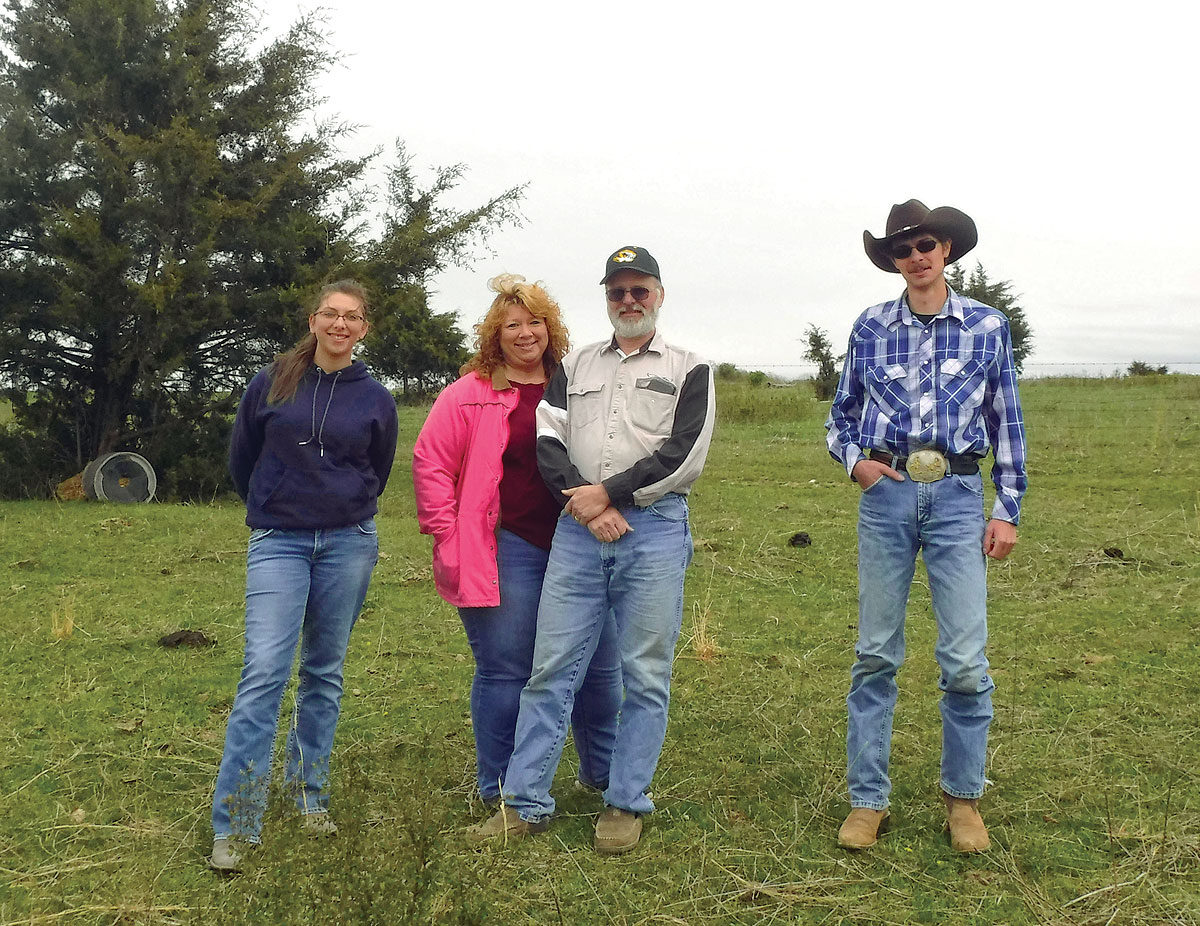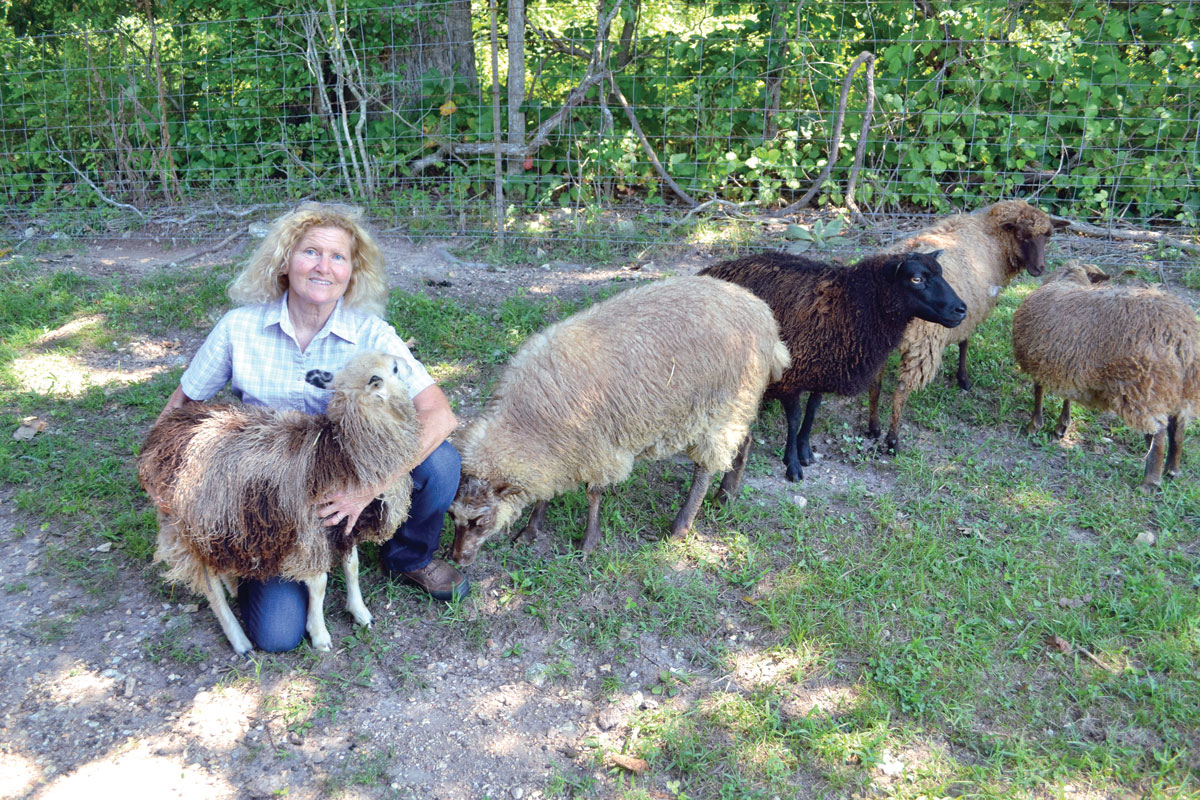
Appalossa horses and beef cattle have roamed the family farm for generations
James and Chantil Richards, and their family carry on the tradition of breeding Appaloosa horses began with Chantil’s parents, Clifford and Connie Farrell, at the family farm in Raymondville, Mo.
“This actually started with my dad in the 1980s. He raised Appaloosas,” Chantil said. “We just kept it going. That was his love. He loved the color. You never got the same thing twice.”
Chantil recalled how busy her parents were with their breeding operation.”
Her father was not above kidding her about the efficiency of his mares during foaling time. He called Chantil when she was in the hospital, about to give birth herself.
“I’ve got four on the ground and they’re walking and eating,” Chantil recalled joking. “ I don’t know what you’re waiting on.”
Clifford and Connie purchased Hands Eagle as their first breeding stallion, a descendent of Hands Up, a foundation Appaloosa stallion. The family has worked to keep their line of Appaloosa horses connected to Hands Up. All of their breeding stock can trace their linage back to this award-winning stallion. Hands Up’s pedigree, included the legendary Man O’ War.
Clifford’s love of the breed is shared by his grandchildren.
Caitlyn Richards plans to pursue a career in equine therapy and brother Justin, works full time managing the farm.
Caitlyn is active in barrel racing, while Justin participates in team roping. Both are graduates of Licking High School.
The Farrell family began acquiring the land which would evolve into their current operation when Chantil’s grandmother Delline Farrell purchased 40 acres during the 1940s while W.A. Farrell was serving in World War II.
“When I was in high school, they had almost 2,000 acres,” Chantil said. “They ran a feeder steer operation.”
The amount of land and its use has changed; the current farm is 150 acres.
Today, the operation includes an eclectic mix of commercial cattle, from Longhorns to Herefords and crossbreeds, which total 44 cows and four bulls of varying ages.
Horses and cattle are pastured together, while the bulls and stallions are kept separate.
While horses remain a major part of Double F Ranch, Justin is committed to increasing the sale of their beef cattle.
“Currently we sell at the local sale barns,” Justin said. “We are in the process of trying to increase our operation, and be able to send them out West. We are trying to improve our operation, so we can have a bigger market.”
All cattle and horses receive the necessary vaccines, and are fed a mixture of fescue, Timothy and Orchardgrass. Bermudagrass, and alfalfa is fed to the mares when they are close to foaling.
It’s clear the affection Caitlyn and Justin have for their horses, and how much the horses have bonded with their caregivers.
“If you go out into the field, most of them will come up to you to see what you’ve got in your hands,” Caitlyn said.
War Eagle is the lead breeding stallion. Holy Smokes, their up and coming stud, has a quiet, affectionate disposition.
Foaling time is busy at the ranch, but is made easier by the use of cameras.
“We put a spot light in the back field and we can look at them,” Justin said.
“Our barns are actually set up where you can have them in the stalls,” Chantil said.
Foal watch primarily falls to Caitlyn.
“‘Cause I’m the youngest,” she said with a smile. “One thing I love about them is how different they are. You can get a horse that looks like a Quarter Horse, with the Appaloosa color, or you could get one that looks like a Thoroughbred. It blows my mind.”
Chantil’s husband, James is also an Appaloosa enthusiast.
When talking about their horses, James is quick to point out the unique features of the breed.
“They’re the best advertisement,” he said. “That’s one reason we have this lot up front, because we’ll have mares and baby’s during the summer time, and people will actually slow down and stop and look at the horses.”







What do you have for sale at this time. Please contact me at my email address below